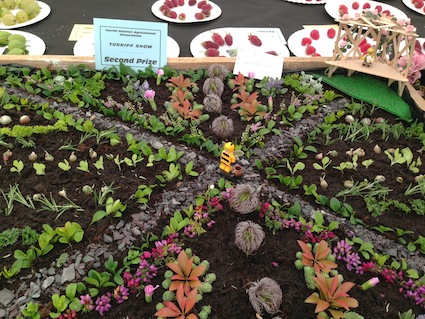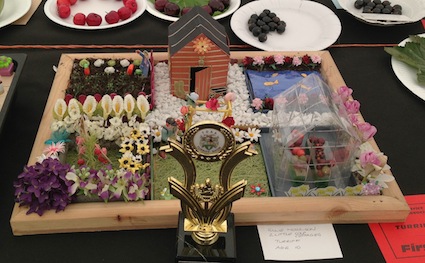At the Turriff Show, one of my favourite competition’s were the children’s miniature worlds. They are beautiful and a good example of how encouraging children to put thought into the design and time into creating the displays pays off.

The outdoor connection is pretty clear. The children have used a lot of plants in these creations. Some are a mix of seedlings. Sedum-type plants seem popular too. Rosemary and other herbs are also common.

Naturally miniature worlds can be used in many ways within a classroom. They can be used as part of the design process for creating a school garden or redesigning the school grounds. So rather than draw ideas or write down suggestions, the children create a tiny model of their ideas.

There is something very creative about these mini worlds. In the photo below, plastic straws have been used for the whirligig washing line. One house in one display was given solar panels!

I also rather likely the use of props – clearly Lego, Playmobile and other such kits were used in several displays

I think it is also a chance to re-use waste items before recycling. Children learn that just a little bit of a resource can have a big impact. Black sandpaper seems to work well as tarmac.

Little worlds lend themselves to lots of projects. At the show, it was gardens and farmyards which were the focus. The detail required can be a useful pre-requisite to exploring scene setting in creative writing. This can be about using the senses to describe the place: the textures, the smells, the atmosphere, the context in which characters play out a story.

Last year I blogged about a class who created little parks based upon their visits to a nearby city park. Creating miniature worlds can help children recall an experience and remember detail that would otherwise be forgotten. It is a form of memory making and arguably journalling or capturing an experience in a different way.

Back in 2009, I worked with the Scottish Earth Science Education Forum to create a super landscape course, Ice Age Free. We asked each group to create models of different ages to demonstrate the impact of ice advancing and retreating on the land. Modelling and 3D landscape mapping are essential components of developing children’s conceptual understanding in geography.

Zen Gardens are another example of miniature world possibilities. After all, they can be any size really .

Whatever the project, inside or out, it could be that a little world is needed. I hope you’ve enjoyed the show!
This post was originally published in August 2013




















These are gorgeous & so much work must have gone into them. Thanks for joining in the latest OPP & your continued support.